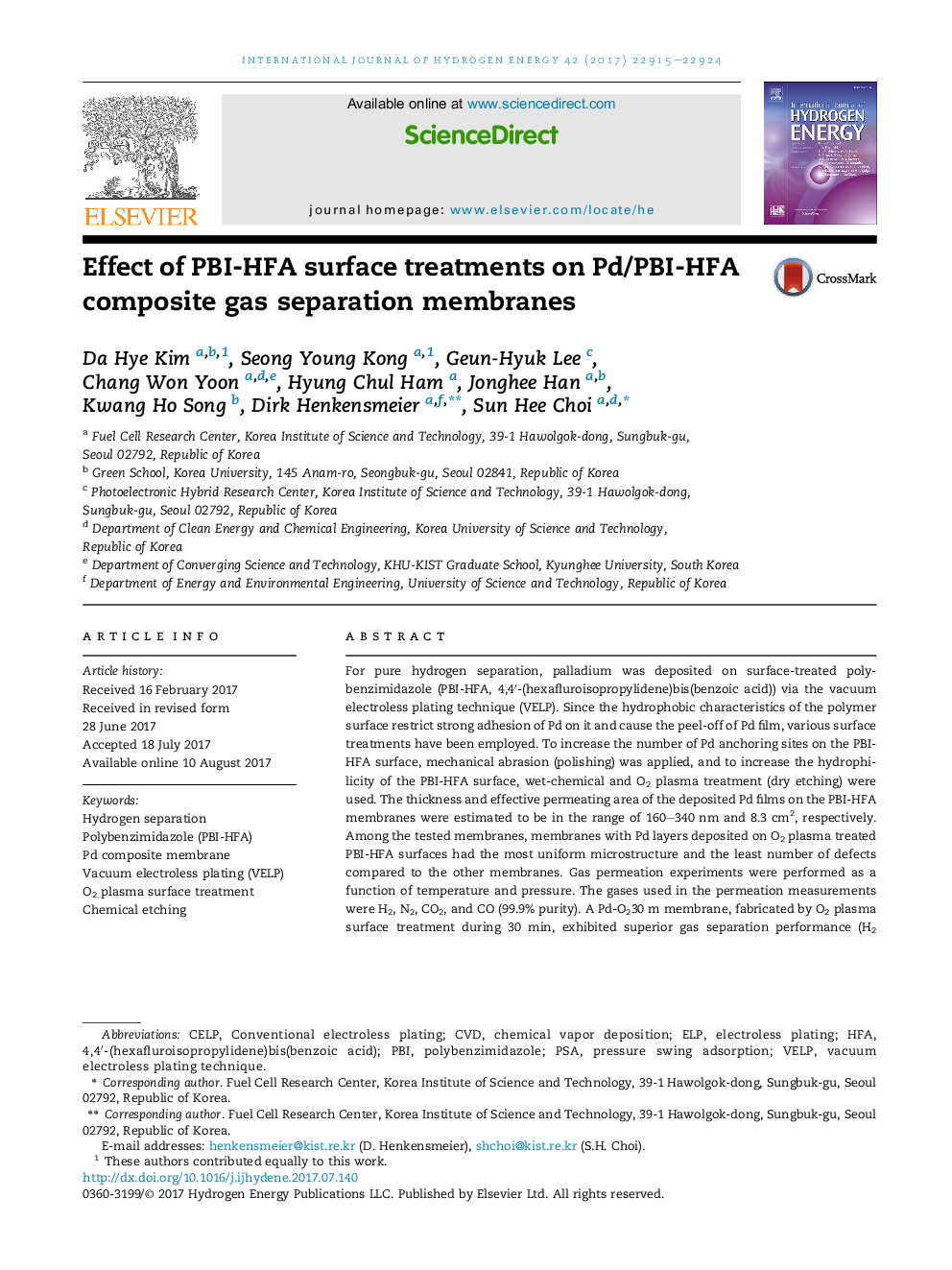| Article ID | Journal | Published Year | Pages | File Type |
|---|---|---|---|---|
| 5145280 | International Journal of Hydrogen Energy | 2017 | 10 Pages |
â¢By applying surface modification, the hydrophilicity of PBI-HFA was increased.â¢After O2 plasma surface treatment, the contact angle of PBI-HFA decreased.â¢All Pd coated PBI-HFA membranes was impermeable to carbon monoxide.â¢H2/CO2 separation performance was considerably enhanced after O2 plasma.â¢We need the Pd film thickness of only about 200 nm for hydrogen separation.
For pure hydrogen separation, palladium was deposited on surface-treated polybenzimidazole (PBI-HFA, 4,4â²-(hexafluroisopropylidene)bis(benzoic acid)) via the vacuum electroless plating technique (VELP). Since the hydrophobic characteristics of the polymer surface restrict strong adhesion of Pd on it and cause the peel-off of Pd film, various surface treatments have been employed. To increase the number of Pd anchoring sites on the PBI-HFA surface, mechanical abrasion (polishing) was applied, and to increase the hydrophilicity of the PBI-HFA surface, wet-chemical and O2 plasma treatment (dry etching) were used. The thickness and effective permeating area of the deposited Pd films on the PBI-HFA membranes were estimated to be in the range of 160-340Â nm and 8.3Â cm2, respectively. Among the tested membranes, membranes with Pd layers deposited on O2 plasma treated PBI-HFA surfaces had the most uniform microstructure and the least number of defects compared to the other membranes. Gas permeation experiments were performed as a function of temperature and pressure. The gases used in the permeation measurements were H2, N2, CO2, and CO (99.9% purity). A Pd-O230Â m membrane, fabricated by O2 plasma surface treatment during 30Â min, exhibited superior gas separation performance (H2 permeability of 275.5 Barrer), and proved to be impermeable to carbon monoxide. Enhancement of H2 permselectivity of Pd/PBI-HFA composite membrane treated by O2 plasma shows promising hydrogen separation membrane.
